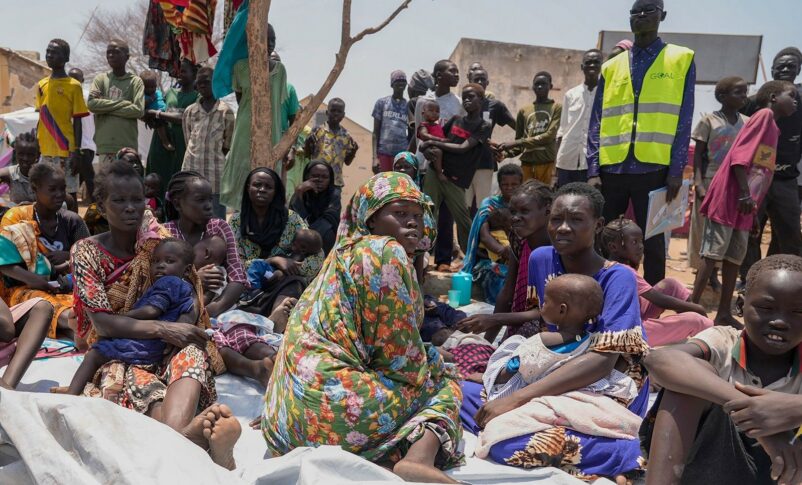516,658 people crossed Sudan’s border into South Sudan: OCHA
January 24, 2023 (JUBA/KHARTOUM) – A total of 516,658 people were recorded crossing the border from Sudan to South Sudan since mid-April 2023, with 81% of these arrivals being South Sudanese and 18% Sudanese, the United Nations said.
Of the 22 monitored entry points, the UN humanitarian agency (OCHA) said, 95% of the arrivals came through Joda in Renk County of Upper Nile State, 2% through Abyei Administrative area and 1.5% via Raja town, Western Bahr el Ghazal State.
Though small, the number arriving through Raja is higher than in the recent past.
“As of 21 January 96,544 refugees and asylum-seekers were transported from border locations onwards,” the UN agency said in its latest bulletin, adding “As of 14 January, 83,908 refugees and asylum-seekers were processed and registered in progress, the registration, identity and case management tool for refugees.
The majority, OCHA’s report says, are in Maban, Renk, Juba, Aweil and Jamjang.
According to the UN relief agency, during the reporting period, 29,700 people were moved from Joda to Renk by road, 5,500 from Renk to Malakal by boat and 3,800 from Malakal to destinations of choice throughout South Sudan by air.
The rising number of new arrivals in Renk posed challenges, demanding a coordinated and sustained response from local authorities and humanitarian partners.
The humanitarian situation in South Sudan remains grim, with insecurity, sub-national violence and climatic shocks adversely affecting the food and nutrition security situation of many families, compounded by the Sudan crisis influx.
The most recent Integrated Food Security Phase Classification results show that South Sudan remains one of the countries with the highest proportion of food-insecure people globally. The results project that 7.1 million or 56% of the country’s population will face acute food insecurity levels, at the crisis level or higher during the April-July 2024 lean season. Of these, 2.3 million in Jonglei State and 79,000 people in Northern Bahr el Ghazal State will face emergency and catastrophe food insecurity levels, including the areas inhabited by new arrivals from Sudan.
Nine months after conflict erupted between the Sudanese Armed Forces (SAF) and the Rapid Support Forces (RSF), over 7.3 million people have reportedly fled their homes, with children representing about half of the people displaced.
Meanwhile South Sudan denied any connection to the ongoing conflict in neighbouring Sudan, dismissing allegations prompted by the circulation of photos on social media showing individuals from South Sudan wearing RSF’s uniform.
South Sudan government’s response comes in the wake of media reports suggesting the presence of its fighters aligned with the RSF against Sudan’s army.
There is, however, no concrete evidence to substantiate these claims.
South Sudan and Sudan signed a non-aggression pact in 2012, prohibiting either country from hosting or supporting rebel groups seeking to overthrow the government of the other.
(ST)

